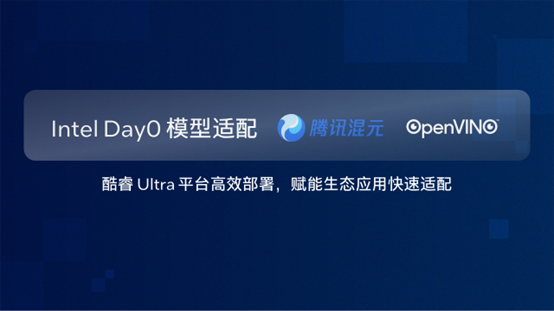本文基于第 13 代英特尔 酷睿 i5-13490F 型号CPU 验证,对于量化后模型,你只需要在16G 的笔记本电脑上就可体验生成过程(最佳体验为 32G 内存)。
SDXL-Turbo 是一个快速的生成式文本到图像模型,可以通过单次网络评估从文本提示中合成逼真的图像。SDXL-Turbo 采用了一种称为 Adversarial Diffusion Distillation (ADD) 的新型训练方法(详见技术报告),该方法可以在 1 到 4 个步骤中对大规模基础图像扩散模型进行采样,并保持高质量的图像。通过最新版本(2023.2)OpenVINO工具套件的强大推理能力及NNCF 的高效神经网络压缩能力,我们能够在两秒内实现SDXL-Turbo 图像的高速、高质量生成。
01
环境安装
在开始之前,我们需要安装所有环境依赖:
%pip install --extra-index-url https://download.pytorch.org/whl/cpu torch transformers diffusers nncf optimum-intel gradio openvino==2023.2.0 onnx "git+https://github.com/huggingface/optimum-intel.git"
02
下载、转换模型
首先我们要把huggingface 下载的原始模型转化为OpenVINO IR,以便后续的NNCF 工具链进行量化工作。转换完成后你将得到对应的text_encode、unet、vae 模型。
from pathlib import Path
model_dir = Path("./sdxl_vino_model")
sdxl_model_id = "stabilityai/sdxl-turbo"
skip_convert_model = model_dir.exists()
import os
if not skip_convert_model:
# 设置下载路径到当前文件夹,并加速下载
os.environ['HF_ENDPOINT'] = 'https://hf-mirror.com'
os.system(f'optimum-cli export openvino --model {sdxl_model_id} --task stable-diffusion-xl {model_dir} --fp16')
os.environ['HF_ENDPOINT'] = 'https://hf-mirror.com'
tae_id = "madebyollin/taesdxl"
save_path = './taesdxl'
os.system(f'huggingface-cli download --resume-download {tae_id} --local-dir {save_path}')
import torch
import openvino as ov
from diffusers import AutoencoderTiny
import gc
class VAEEncoder(torch.nn.Module):
def __init__(self, vae):
super().__init__()
self.vae = vae
def forward(self, sample):
return self.vae.encode(sample)
class VAEDecoder(torch.nn.Module):
def __init__(self, vae):
super().__init__()
self.vae = vae
def forward(self, latent_sample):
return self.vae.decode(latent_sample)
def convert_tiny_vae(save_path, output_path):
tiny_vae = AutoencoderTiny.from_pretrained(save_path)
tiny_vae.eval()
vae_encoder = VAEEncoder(tiny_vae)
ov_model = ov.convert_model(vae_encoder, example_input=torch.zeros((1,3,512,512)))
ov.save_model(ov_model, output_path / "vae_encoder/openvino_model.xml")
tiny_vae.save_config(output_path / "vae_encoder")
vae_decoder = VAEDecoder(tiny_vae)
ov_model = ov.convert_model(vae_decoder, example_input=torch.zeros((1,4,64,64)))
ov.save_model(ov_model, output_path / "vae_decoder/openvino_model.xml")
tiny_vae.save_config(output_path / "vae_decoder")
convert_tiny_vae(save_path, model_dir)
03
从文本到图像生成
现在,我们就可以进行文本到图像的生成了,我们使用优化后的openvino pipeline 加载转换后的模型文件并推理;只需要指定一个文本输入,就可以生成我们想要的图像结果。
from optimum.intel.openvino import OVStableDiffusionXLPipeline device='AUTO' # 这里直接指定AUTO,可以写成CPU model_dir = "./sdxl_vino_model" text2image_pipe = OVStableDiffusionXLPipeline.from_pretrained(model_dir, device=device)
import numpy as np
prompt = "cute cat"
image = text2image_pipe(prompt, num_inference_steps=1, height=512, width=512, guidance_scale=0.0, generator=np.random.RandomState(987)).images[0]
image.save("cat.png")
image
# 清除资源占用 import gc del text2image_pipe gc.collect()
04
从图片到图片生成
我们还可以实现从图片到图片的扩散模型生成,将刚才产出的文生图图片进行二次图像生成即可。
from optimum.intel import OVStableDiffusionXLImg2ImgPipeline model_dir = "./sdxl_vino_model" device='AUTO' # 'CPU' image2image_pipe = OVStableDiffusionXLImg2ImgPipeline.from_pretrained(model_dir, device=device)
Compiling the vae_decoder to AUTO ... Compiling the unet to AUTO ... Compiling the vae_encoder to AUTO ... Compiling the text_encoder_2 to AUTO ... Compiling the text_encoder to AUTO ...
photo_prompt = "a cute cat with bow tie"
photo_image = image2image_pipe(photo_prompt, image=image, num_inference_steps=2, generator=np.random.RandomState(511), guidance_scale=0.0, strength=0.5).images[0]
photo_image.save("cat_tie.png")
photo_image
05
量化
NNCF(Neural Network Compression Framework) 是一款神经网络压缩框架,通过对 OpenVINO IR 格式模型的压缩与量化以便更好的提升模型在英特尔设备上部署的推理性能。
[NNCF]:
https://github.com/openvinotoolkit/nncf/
[NNCF] 通过在模型图中添加量化层,并使用训练数据集的子集来微调这些额外的量化层的参数,实现了后训练量化。量化后的权重结果将是INT8 而不是FP32/FP16,从而加快了模型的推理速度。
根据SDXL-Turbo Model 的结构,UNet 模型占据了整个流水线执行时间的重要部分。现在我们将展示如何使用[NNCF] 对UNet 部分进行优化,以减少计算成本并加快流水线速度。至于其余部分不需要量化,因为并不能显著提高推理性能,但可能会导致准确性的大幅降低。
量化过程包含以下步骤:
- 为量化创建一个校准数据集。
- 运行nncf.quantize() 来获取量化模型。
- 使用openvino.save_model() 函数保存INT8 模型。
注:由于量化需要一定的硬件资源(64G 以上的内存),之后我直接附上了量化后的模型,你可以直接下载使用。
from pathlib import Path
import openvino as ov
from optimum.intel.openvino import OVStableDiffusionXLPipeline
import os
core = ov.Core()
model_dir = Path("./sdxl_vino_model")
UNET_INT8_OV_PATH = model_dir / "optimized_unet" / "openvino_model.xml"
import datasets
import numpy as np
from tqdm import tqdm
from transformers import set_seed
from typing import Any, Dict, List
set_seed(1)
class CompiledModelDecorator(ov.CompiledModel):
def __init__(self, compiled_model: ov.CompiledModel, data_cache: List[Any] = None):
super().__init__(compiled_model)
self.data_cache = data_cache if data_cache else []
def __call__(self, *args, **kwargs):
self.data_cache.append(*args)
return super().__call__(*args, **kwargs)
def collect_calibration_data(pipe, subset_size: int) -> List[Dict]:
original_unet = pipe.unet.request
pipe.unet.request = CompiledModelDecorator(original_unet)
dataset = datasets.load_dataset("conceptual_captions", split="train").shuffle(seed=42)
# Run inference for data collection
pbar = tqdm(total=subset_size)
diff = 0
for batch in dataset:
prompt = batch["caption"]
if len(prompt) > pipe.tokenizer.model_max_length:
continue
_ = pipe(
prompt,
num_inference_steps=1,
height=512,
width=512,
guidance_scale=0.0,
generator=np.random.RandomState(987)
)
collected_subset_size = len(pipe.unet.request.data_cache)
if collected_subset_size >= subset_size:
pbar.update(subset_size - pbar.n)
break
pbar.update(collected_subset_size - diff)
diff = collected_subset_size
calibration_dataset = pipe.unet.request.data_cache
pipe.unet.request = original_unet
return calibration_dataset
if not UNET_INT8_OV_PATH.exists(): text2image_pipe = OVStableDiffusionXLPipeline.from_pretrained(model_dir) unet_calibration_data = collect_calibration_data(text2image_pipe, subset_size=200)
import nncf
from nncf.scopes import IgnoredScope
UNET_OV_PATH = model_dir / "unet" / "openvino_model.xml"
if not UNET_INT8_OV_PATH.exists():
unet = core.read_model(UNET_OV_PATH)
quantized_unet = nncf.quantize(
model=unet,
model_type=nncf.ModelType.TRANSFORMER,
calibration_dataset=nncf.Dataset(unet_calibration_data),
ignored_scope=IgnoredScope(
names=[
"__module.model.conv_in/aten::_convolution/Convolution",
"__module.model.up_blocks.2.resnets.2.conv_shortcut/aten::_convolution/Convolution",
"__module.model.conv_out/aten::_convolution/Convolution"
],
),
)
ov.save_model(quantized_unet, UNET_INT8_OV_PATH)
06
运行量化后模型
由于量化unet 的过程需要的内存可能比较大,且耗时较长,我提前导出了量化后unet 模型,此处给出下载地址:
链接: https://pan.baidu.com/s/1WMAsgFFkKKp-EAS6M1wK1g
提取码: psta
下载后解压到目标文件夹`sdxl_vino_model` 即可运行量化后的int8 unet 模型。
从文本到图像生成
from pathlib import Path
import openvino as ov
from optimum.intel.openvino import OVStableDiffusionXLPipeline
import numpy as np
core = ov.Core()
model_dir = Path("./sdxl_vino_model")
UNET_INT8_OV_PATH = model_dir / "optimized_unet" / "openvino_model.xml"
int8_text2image_pipe = OVStableDiffusionXLPipeline.from_pretrained(model_dir, compile=False)
int8_text2image_pipe.unet.model = core.read_model(UNET_INT8_OV_PATH)
int8_text2image_pipe.unet.request = None
prompt = "cute cat"
image = int8_text2image_pipe(prompt, num_inference_steps=1, height=512, width=512, guidance_scale=0.0, generator=np.random.RandomState(987)).images[0]
display(image)
Compiling the text_encoder to CPU ... Compiling the text_encoder_2 to CPU ... 0%| | 0/1 [00:00
import gc del int8_text2image_pipe gc.collect()
从图片到图片生成
from optimum.intel import OVStableDiffusionXLImg2ImgPipeline int8_image2image_pipe = OVStableDiffusionXLImg2ImgPipeline.from_pretrained(model_dir, compile=False) int8_image2image_pipe.unet.model = core.read_model(UNET_INT8_OV_PATH) int8_image2image_pipe.unet.request = None photo_prompt = "a cute cat with bow tie" photo_image = int8_image2image_pipe(photo_prompt, image=image, num_inference_steps=2, generator=np.random.RandomState(511), guidance_scale=0.0, strength=0.5).images[0] display(photo_image)
Compiling the text_encoder to CPU ... Compiling the text_encoder_2 to CPU ... Compiling the vae_encoder to CPU ... 0%| | 0/1 [00:00
我们可以对比量化后的unet 模型大小减少,可以看到量化对模型大小的压缩是非常显著的
from pathlib import Path model_dir = Path("./sdxl_vino_model") UNET_OV_PATH = model_dir / "unet" / "openvino_model.xml" UNET_INT8_OV_PATH = model_dir / "optimized_unet" / "openvino_model.xml" fp16_ir_model_size = UNET_OV_PATH.with_suffix(".bin").stat().st_size / 1024 quantized_model_size = UNET_INT8_OV_PATH.with_suffix(".bin").stat().st_size / 1024 print(f"FP16 model size: {fp16_ir_model_size:.2f} KB") print(f"INT8 model size: {quantized_model_size:.2f} KB") print(f"Model compression rate: {fp16_ir_model_size / quantized_model_size:.3f}")
FP16 model size: 5014578.27 KB INT8 model size: 2513501.39 KB Model compression rate: 1.995
运行下列代码可以对量化前后模型推理速度进行简单比较,我们可以发现速度几乎加速了一倍,NNCF 使我们在 CPU 上生成一张图的时间缩短到两秒之内:
FP16 pipeline latency: 3.148 INT8 pipeline latency: 1.558 Text-to-Image generation speed up: 2.020
import time def calculate_inference_time(pipe): inference_time = [] for prompt in ['cat']*10: start = time.perf_counter() _ = pipe( prompt, num_inference_steps=1, guidance_scale=0.0, generator=np.random.RandomState(23) ).images[0] end = time.perf_counter() delta = end - start inference_time.append(delta) return np.median(inference_time)
int8_latency = calculate_inference_time(int8_text2image_pipe) text2image_pipe = OVStableDiffusionXLPipeline.from_pretrained(model_dir) fp_latency = calculate_inference_time(text2image_pipe) print(f"FP16 pipeline latency: {fp_latency:.3f}") print(f"INT8 pipeline latency: {int8_latency:.3f}") print(f"Text-to-Image generation speed up: {fp_latency / int8_latency:.3f}")
07
可交互前端demo
最后,为了方便推理使用,这里附上了gradio 前端运行demo,你可以利用他轻松生成你想要生成的图像,并尝试不同组合。
import gradio as gr from pathlib import Path import openvino as ov import numpy as np core = ov.Core() model_dir = Path("./sdxl_vino_model") # 如果你只有量化前模型,请使用这个地址并注释 optimized_unet 地址: # UNET_PATH = model_dir / "unet" / "openvino_model.xml" UNET_PATH = model_dir / "optimized_unet" / "openvino_model.xml" from optimum.intel.openvino import OVStableDiffusionXLPipeline text2image_pipe = OVStableDiffusionXLPipeline.from_pretrained(model_dir) text2image_pipe.unet.model = core.read_model(UNET_PATH) text2image_pipe.unet.request = core.compile_model(text2image_pipe.unet.model) def generate_from_text(text, seed, num_steps, height, width): result = text2image_pipe(text, num_inference_steps=num_steps, guidance_scale=0.0, generator=np.random.RandomState(seed), height=height, width=width).images[0] return result with gr.Blocks() as demo: with gr.Column(): positive_input = gr.Textbox(label="Text prompt") with gr.Row(): seed_input = gr.Number(precision=0, label="Seed", value=42, minimum=0) steps_input = gr.Slider(label="Steps", value=1, minimum=1, maximum=4, step=1) height_input = gr.Slider(label="Height", value=512, minimum=256, maximum=1024, step=32) width_input = gr.Slider(label="Width", value=512, minimum=256, maximum=1024, step=32) btn = gr.Button() out = gr.Image(label="Result (Quantized)" , type="pil", width=512) btn.click(generate_from_text, [positive_input, seed_input, steps_input, height_input, width_input], out) gr.Examples([ ["cute cat", 999], ["underwater world coral reef, colorful jellyfish, 35mm, cinematic lighting, shallow depth of field, ultra quality, masterpiece, realistic", 89], ["a photo realistic happy white poodle dog playing in the grass, extremely detailed, high res, 8k, masterpiece, dynamic angle", 1569], ["Astronaut on Mars watching sunset, best quality, cinematic effects,", 65245], ["Black and white street photography of a rainy night in New York, reflections on wet pavement", 48199] ], [positive_input, seed_input]) try: demo.launch(debug=True) except Exception: demo.launch(share=True, debug=True)
08
总结
利用最新版本的OpenVINO优化,我们可以很容易实现在家用设备上高效推理图像生成AI 的能力,加速生成式AI 在世纪场景下的落地应用;欢迎您与我们一同体验OpenVINO与NNCF 在生成式AI 场景上的强大威力。
审核编辑:刘清
-
英特尔
+关注
关注
61文章
10275浏览量
179358 -
OpenVINO
+关注
关注
0文章
117浏览量
717
原文标题:用 OpenVINO™ 在英特尔 13th Gen CPU 上运行 SDXL-Turbo 文本图像生成模型 | 开发者实战
文章出处:【微信号:英特尔物联网,微信公众号:英特尔物联网】欢迎添加关注!文章转载请注明出处。
发布评论请先 登录
硬件与应用同频共振,英特尔Day 0适配腾讯开源混元大模型

使用英特尔® NPU 插件C++运行应用程序时出现错误:“std::Runtime_error at memory location”怎么解决?
使用Openvino™ GenAI运行Sdxl Turbo模型时遇到错误怎么解决?
无法将Openvino™ 2025.0与onnx运行时Openvino™ 执行提供程序 1.16.2 结合使用,怎么处理?
在英特尔酷睿Ultra AI PC上部署多种图像生成模型

为什么无法检测到OpenVINO™工具套件中的英特尔®集成图形处理单元?
请问OpenVINO™工具套件英特尔®Distribution是否与Windows® 10物联网企业版兼容?
安装OpenVINO™适用于Raspberry Pi64位操作系统的工具套件2022.3.1,配置英特尔®NCS2时出错怎么解决?
为什么在Ubuntu20.04上使用YOLOv3比Yocto操作系统上的推理快?
英特尔®NCS2运行演示时“无法在启动后找到启动设备”怎么解决?
为什么Caffe模型可以直接与OpenVINO™工具套件推断引擎API一起使用,而无法转换为中间表示 (IR)?
英特尔OpenVINO 2025.0正式发布

英特尔的开发板评测






 用OpenVINO™在英特尔13th Gen CPU上运行SDXL-Turbo文本图像生成模型
用OpenVINO™在英特尔13th Gen CPU上运行SDXL-Turbo文本图像生成模型











评论